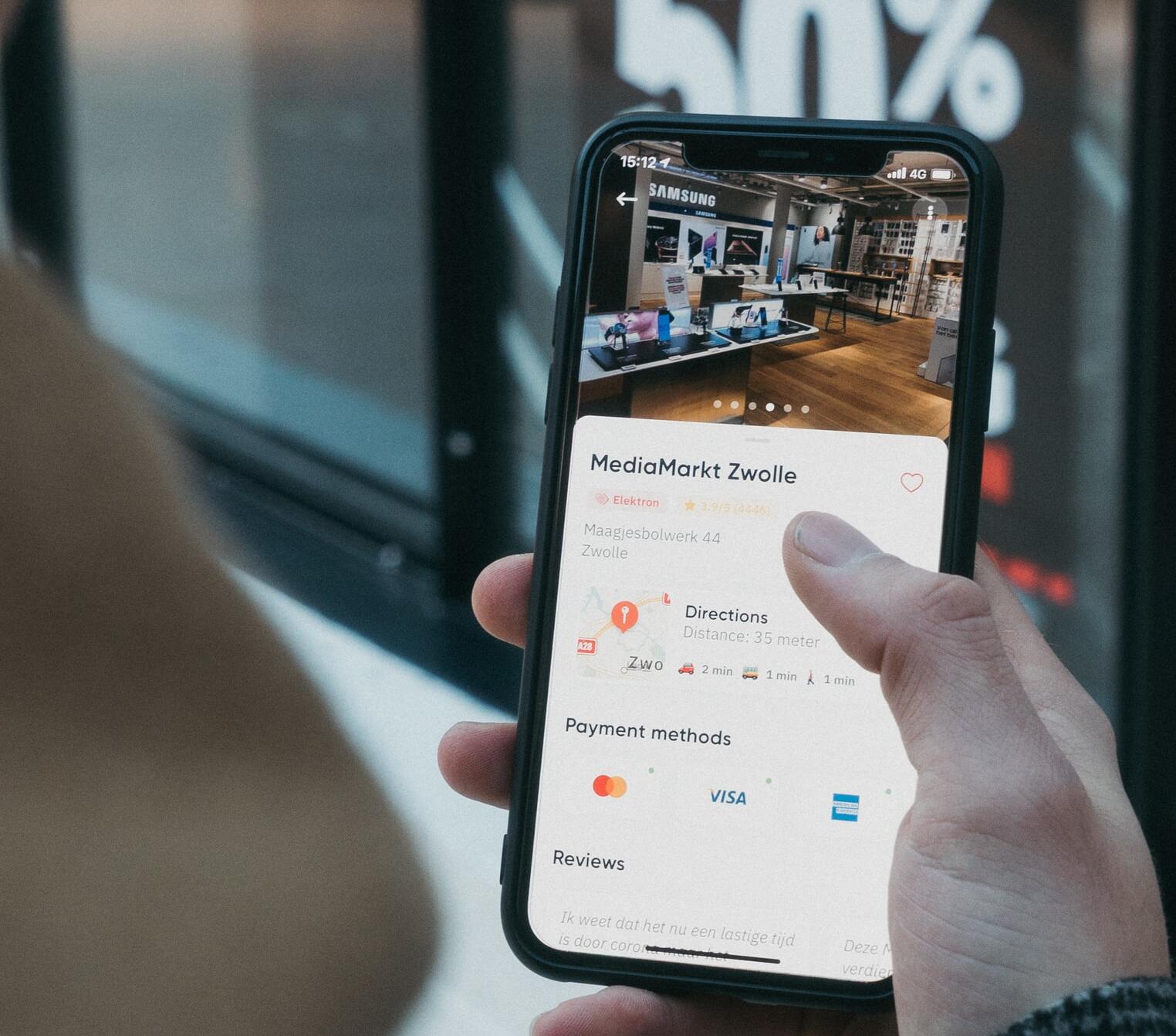How to Build an Online Marketplace
How to Build an Online Marketplace: Custom Development with Marketplace Software
Got an idea for a marketplace you want to implement?
Here you will learn how to build it, the options you have and important considerations for creating an online marketplace.
Two main options to build your own marketplace:
- Custom development
- Off-the-shelf solutions
Custom development of your online marketplaces
Custom development means building software for a client from scratch, all new or with API services. In this case a custom marketplace software. You can hire an in-house team of developers or outsource your marketplace development.
Custom development is a good choice to:
- Commit to build a long-term project
- Raise investment and solve a specific pain
- Have greater flexibility
- Add more features and specific customization
- Have control of your project
- Integrate with any external APIs and services
- Have a scalable solution
- Build a custom UI/UX
Pros of custom marketplace development
- Compatibility: your marketplace can be made compatible with different devices, technologies, external API services and other tools.
- Personalization: you can build the marketplace to your specific business needs and requirements.
- Scalability: a custom marketplace can handle any number of listings and users, no limit in growth.
- Security: custom development allows more tools for securing your marketplace against fraud and malicious activity.
Cons of custom marketplace development
- Time: to build something great requires time and commitment from a team, finding the right partner and dedicated team is essential.
- Cost: custom development requires bigger investment. The bets practice is to build an MVP to gain traction, find investors to raise money for further product development.
With consumers consuming content and making purchases through many touchpoints traditional eCommerce platforms are in need to accelerate innovation.
Marketplace solutions
Off-the-shelf software is a ready-made solution. They can be a good quick start for validation of the business.
Off-the-shelf solutions are best suitable for
- Validation of business idea
- Easy to implement solution
- Use out of the box features
- Less investment
Types of marketplace software builder:
- SaaS – Software as a Service
- CMS – Content Management System
- Vendor-hosted
- Self-hosted (open-source or closed-source)
- Headless API – Application Programming Interface
- Marketplace Builder with SDK
- Marketplace with a basic front-end template
- PaaS – Platform as a Service
1. SaaS – Software as a Service
SaaS is a software model where software is as subscription, rather than bought and owned, and is centrally hosted.
The Saas marketplace platform could be the most suitable for marketplaces with a relatively simple business idea, or a niche & non-technical team.
One of the most common pricing models for such services is a monthly and yearly subscription fee. The exact price may depend on the number of transactions made through your marketplace, the number of listings (published goods or services), or the total number of users that have been registered on your platform.
Pros of SaaS for marketplaces
- Little or no technical effort to start from the founder’s perspective
- Experienced technical support from SaaS provider
Cons of SaaS for marketplaces
- Low flexibility in terms of both functionality and UI
- High price after reaching some number of users, listings etc.
Hosted version:
- The provider takes care of servers and tech support.
- You get regular updates of version and latest features
- Some payment gateways are available
- Little technical knowledge is need
- Little or no customization the backend
- Limited customization frontend (CSS, HTML, and JavaScript)
Self-hosted version:
- You are responsible for installation
- You are responsible for the technical skills
- The level of support depends on many factors
- Some code can be re-written
- Requires bigger investment
Best choice Vendor: Arcadier Marketplace Builder – Scale version
2. Content Management System (CMS)
СMS is a software used to create and manage digital content. Marketplace CMS gives more flexibility than custom SaaS in terms of logic and UI customization. The developers for the marketplace team have more control over the code base and can create pages and transaction flows with more complexity. To build the marketplace you must hire a team of developers who have experience with this specific CMS or tech stack on which it is built.
Pros of CMS
- Flexibility for UI and business logic customization
- Can access a pool of vendors
Cons of CMS
- Need to find the right developers with a particular CMS tech to customize it (if a vendor doesn’t offer any customization support)
- Additional development cost, if it doesn’t feature public API or integration with external APIs.
Vendor-hosted:
- Vendor offers hosting and deployment services.
- Vendor provides backups and updates for your marketplace
- Access a team of dedicated developers through the vendor to customize it according to your needs.
Self-hosted:
- open-source marketplace CMS or it can be a commercial lifetime license
- You control deployment, scale and customizations to meet your needs
- You are also responsible for technical support.
3. Headless API
Marketplace Headless API (or so-called API as a service) is the evolution of SaaS marketplace technology. An API is a set of requests and methods between a server and a client.
All the vendors of Headless Marketplace APIs provide great flexibility for customization to build your marketplace idea. A great solution can be built with APIs. They are also great to customize the UI and logic.
Some vendors offer an SDK marketplace library (or set of libraries for different programming languages) that wraps low-level calls to your API from marketplace front-end over HTTP or GraphQL, this can accelerate your development.
Some marketplace API providers offer a frontend template that uses their marketplace API (+ SDK). A particular marketplace developer may use it as a starting point and customize or even rewrite it from scratch later if needed.
Pros of Headless API
- Totally customizable UI and maximum business logic flexibility (with the API endpoints)
- Easy to integrate Headless API into existing website or e-commerce sites (Some API vendors offer connector scripts for some target e-commerce platforms)
- Full flexibility for marketplace builders in terms of API support, QA and DevOps
Cons of Headless API
- The UI and UX for the marketplace need to be created from scratch or based on a frontend bespoke template.
- Some vendors manage hosting, deployment, and backups of the front-end.
- Need for a dedicated team of engineers to build your marketplace
Top Vendor: Arcadier Marketplace – Enterprise version
4. Platform as a Service (PaaS)
“Platform as a Service” or “Marketplace Platform” is the new enterprise type of a marketplace tech approach. PaaS is a digital platform that allows people to build marketplaces and services by using the API services.
Paas is a great toolkit for a marketplace builder, means more flexibility for the UI/UX and logic are APIs, the deployment and administration are done through the platform portal interface. It is a mix of open-source, API as a Service and Infrastructure.
Here you gain much more flexibility for customization. Here you have access to the frontend and backend. The downside is that you’re tied to the platform’s grid of deployment and scaling servers. For some, you need your vendor to provide DevOps and support. Other vendors will help to provide Tier 1 services for scaling at a cost.
Pros of PaaS Marketplace Builder
- All pros of the Headless API
- Plus some Vendors provide support and consulting for both front-end and back-end parts of a marketplace
Cons of PaaS Marketplace Builder
- There is some Vendor dependency in terms of long-term commitment
Best Vendor: Arcadier Marketplace Builder
What to consider when deciding to develop a marketplace?
Budget
Is your capital under USD $25,000? An off-the-shelf solution could be an option of low-budget to start with limited functionality. Another option available to you is starting with a discovery phase and building PoC, if you plan to pitch your idea to investors to raise money.
Do you have USD $25,000+? We suggest building something with a Saas, Paas, with Headless API to customize your Marketplace.
Deadlines
Want to launch a marketplace MVP in less than three months? Your options are SaaS Of-the-shelf.
Have more than three months? Go custom, build something with a Headless API option, create our unique ecommerce experience.
Investments
Have limited funds? Go with a pre-build Saas or Paas, with litte customization.
Are you willing to fundraise further? Custom development is better to innovate, using a Headless API vendor will be the best way to go. Hire a dedicated team of experts.
Size of your marketplace
Less than 100,000 users in your marketplace? SaaS or PaaS are a perfect fit. Find if the vendor is able to scale when needed.
Planning to have more than 100,000 users? A Headless API with scalability or custom development with a Team of experts are the best approach for scalability.
Technical Skills
Not Tech founders? You can hire a Team of eCommerce experts to build a custom marketplace with SaaS or PaaS. The top value of custom development is personalization. By building a marketplace with the right tools, you will be able to design it exactly the way you want it to be.
Want to hire a dedicated team of eCommerce experts? We might be able to help you, depending on the stage of your eBusiness we can jump in, build a team of experts, to provide the right mix of tech skills, innovation and business sense.

Summary
When planning to build an online marketplace you have two options: custom development or an off-the-shelf solution.
Off-the-shelf software for marketplaces comes in four different shapes: SaaS, CMS, Headless API and PaaS.
While deciding what is most convenient for you business, remember these questions:
- What is your budget?
- When are your deadlines?
- Do you plan to fundraise?
- What is the desired size of your marketplace?
- Do you have the technical skills?
If what you need is a fast and less expensive option?
Then an off-the-shelf solution is the way, we are the right partner to help you build your MVP with best time-to-market and with little investment. (SaaS, PaaS, Headless API)
But if you want to build a marketplace to your specific needs, scalable, more secure, hyper-personalized?
Then custom development is what you need. Here at Towa Software, we build custom marketplaces with highest-standards of quality, best rates in North America and with an expert team of developers, ecommerce consultants, innovation manager, UI/UX designer, QAs testers and Scrum Masters.
Book a 15-min video call with us.




